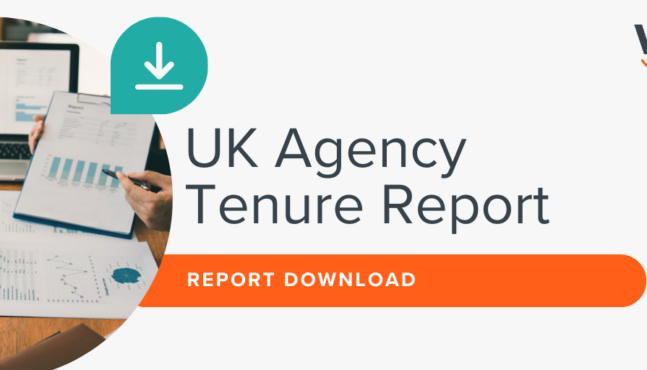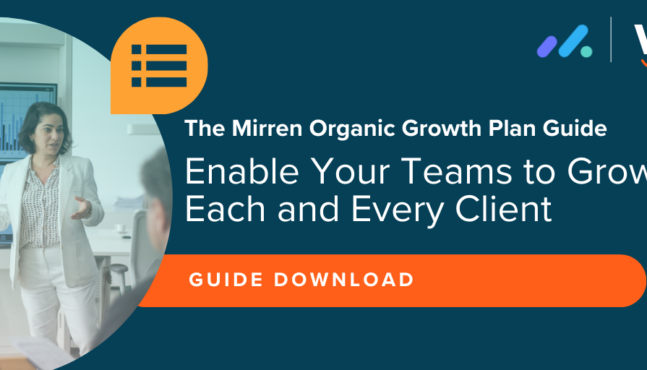
5 Sales Intelligence Must-Haves to Find Decision Makers
Sales intelligence tools provide background data on contacts, companies, and industries. The idea is that rather than spending hours researching and vetting contact information for decision makers – that may or may not prove fruitful – sales professionals can use these resources to easily access what they need.
But do they actually work?
The right sales intelligence tool for your company can turn prospects into leads faster, shorten your sales cycle, improve conversion rates and free you up from the tedious stuff so you can focus on the meat of what you do – building relationships and closing deals.
For those targeting national marketers and/or their agencies, there are specific features and functions that the highest-performing users consider must-haves – in other words, the boxes that must be checked to make it a worthy investment.
In our 20+ years working alongside media, marketing, and agency new business teams, we’ve cultivated an acute understanding of what these particular groups need to succeed. After listening to our clients and conducting extensive research, from surveys and focus groups to beta tests and everything in between, these are the five must-haves our most successful clients tell us they need:
1) Human-Verified Data for Prospecting
If meaningful sales intelligence could be scraped from the internet, your better bet would be to pay someone to write a script that could collect it for you. The fact is that the information needed to engage the right people at the right companies is not something that’s conspicuously floating around the web, or accurately crowd-sourced in any other way.
That’s not to say that technology and crowd-based collection can’t provide a great starting point – it certainly can – but data sourced from anything other than a first-person account still needs to be vetted, verified and confirmed by humans, preferably humans who understand how clients will use this information. For that reason, our company employs a team of US-based analysts who maintain relationships with our clients, as this ensures they understand what’s at stake for the end user. Their contribution is simply not something we can outsource or automate, and when we talk with other highly-rated sales intelligence providers in other industries, they’ve concluded this is a corner they cannot cut either.
Data goes stale quickly. We’ve found that over a four-month period 7% of people exit their current company and an additional 9% have job title changes. So while no resource can provide 100% accuracy 100% of the time, an update cycle of 3-6 months can provide you with something that comes pretty close.
Don’t be shy to ask direct questions about confirmation and research cycles. Good vendors are proud of their team’s process and happy to tell you exactly how data is collected, who collects it, and how often it’s verified.
Email deliverability can shed additional light on accuracy. For our clients in the media and marketing industry, anything less than 80% is not acceptable, and over 90% is ideal. That bar may seem high, but the idea of this investment is to save you time.
Remember, as difficult as it is to reach a prospect without sales intelligence, sales intelligence that isn’t human-verified can send you on an even more wasteful wild goose chase.
2) Intuitive Relationship Mapping
Consider the way that contacts, brands, parent companies and agencies are connected, and the important role that those connections play in informing your outreach. As an example, Axe Body Spray is owned by Unilever. Unilever owns many, many other brands. The Axe brand manager and marketing director will be different than the Ben & Jerry’s marketing group. Each brand’s account may be staffed by different media planners at an agency, and they may have different agencies altogether.
As a sales professional, you don’t want to have to guess which individuals work on which brands, and which brands work with which agencies. Your sales intelligence tool needs to get this delicate data structure right so you’re able to access a complete view of everyone involved in making decisions, budget-by-budget.
Consider the following data relationships in particular:
- Media Spend: If media spend is provided, is it per company, or per brand? The most useful sales intelligence platforms will provide you with information on how much each brand within an organization is spending, broken down by medium, so that you can see all available budgets and who owns them.
- Brand-Company-Agency Contacts: Keep in mind that in many databases client-agency relationships may only be identified at the organizational level, meaning that the contacts listed at a company, or an agency may be generic, and not specified according to the account on which they work. An essential role of sales intelligence is to map these relationships at the contact level, so that users can identify who oversees which account. Want to look unprofessional? Just have three people on your team call the same person to score some new business. That’s the kind of thing that happens when contacts aren’t attached to their specific brands and something that can make your organization look less than organized.
3) A Business Contacts Database Targeted to Your Needs
You want as many leads as you can get, right? Many people evaluating sales intelligence get caught up in the numbers, they collect a few stats on the number of contacts and companies included and present that information to their bosses to persuade them to purchase the resource.
Sure, numbers are important, but there’s a lot more to consider. Do the resources in question have high numbers of legitimate brands that you are interested in working with, in regions you cover, and with people you need to reach? Or will they only produce a list of companies who will represent poor ROI for your company or ones you’ll spend countless hours chasing only to find out they don’t have the budget for the kind of work your company specializes in…
To best serve our clients, our in-house research team keeps a tight focus on which companies, brands, and agencies we include in our database, honing in on major marketers spending $750,000 or more in annual media and the agencies they work with. Exceptions include brands working with several agencies of record, and those that our research team has found are spending extensively in unmeasured channels, such as sponsorships and events. We keep that focus in order to make sure that our clients have consistent, reliable access to the data they expect to find when they need to find it.
4) Smart Search Filters
Yes, it’s fun to pull up target accounts by name and look at who works there and who they work with and how much they spend on digital campaigns. But when evaluating a resource, don’t skip over features you’ll need to rely on in the long run. Your team will want to generate lists – for cold prospecting, email campaigns and other efforts – by targeting the qualities that high-value prospects share. And to do that, you need to be able to apply filters to the data.
The most basic list-generating filters are industry, geography, title, rank, and role. For professionals targeting advertisers and agencies, however, we find that many of the following are also necessary:
- Advertiser Media Spending
- Planning Period – So you can prioritize outreach to brands planning upcoming campaigns
- Customer or Audience Composition – Demographics and financial data
- Agency Specialty, Discipline & Client Industry
- Agency Media Dollars Held
Whatever qualities your high-value prospects share, make sure the platform has filters that enable you to capture them. Here are a few popular searches our clients perform, which you can use as a template to create your own list of important filters.
- Companies spending $1MM+ in digital video
- Sponsorship contacts at brands targeting Hispanic consumers
- Apparel Companies in the Southeast
- Omnicom Group agencies handling CPG accounts
It should be noted as well that these filters should be easy to identify and use. The cost of a tool you can’t use is always too much, even if it’s the cheapest tool on the market. A platform with an intuitive user interface is more likely to be used—if you have children and a smartphone or tablet, you probably already know this.
5) Key Integrations
Your sales team does not work in a vacuum. They consult different resources, including your CRM system, email and LinkedIn, and your sales intelligence solution should fit into the flow of how they do business. Depending on the integrations that are most important to your sales team, here are a few of the features you may want to inquire about:
- See individual profiles so that you can cross-check information
- View network connections for companies, to determine where (or with whom) you should begin your outreach
CRM Integration
Of course, you should be able to export information to Excel and CSV files – that’s a given, but you may want to save contact data directly to your CRM, with an integration that has:
- Simple set up. If the set up comes with several pages of instructions, will the time spent be worth the time saved? Will you end up using the integration?
- Field mapping. Your fields may not match the default fields of the platform – they say direct_dial, you say phone_individual – make sure you can route information to its proper destination.
- Duplicate detection. You want to keep your CRM environment clean, right?
While the above integrations help connect to your existing resources, you may also want to ask about integrations that incorporate resources you don’t have, providing you with new information you may otherwise not have access to, including:
- Ad creative. Through API connections, sales intelligence tools can incorporate ad creative from platforms such as MOAT or AdForum, allowing you to see a prospect’s latest digital or TV advertisements
- Media spend. A popular resource providing media spend would be Kantar Media, or, for paid search spending, SEMRush
So what’s next? Now that you’ve identified the features and functionalities that are most important to you and your sales team it’s time to pair your list of must-have’s with a platform. Based on your needs, narrow your search down to sales intelligence platforms that look like they fit your criteria and request a demonstration.
The importance of a guided tour cannot be overstated. Product specialists are experts on their resources and can show you the features you’re looking for, and help you determine a best fit. After being shown a demonstration, as long as you are a qualified potential customer, most vendors are typically happy to set you up with temporary access.
My biggest recommendation here is to make that time count! The due diligence that you put in during your trial will ensure the long-term success of your sales team and the ROI you’re able to prove for your investment.




